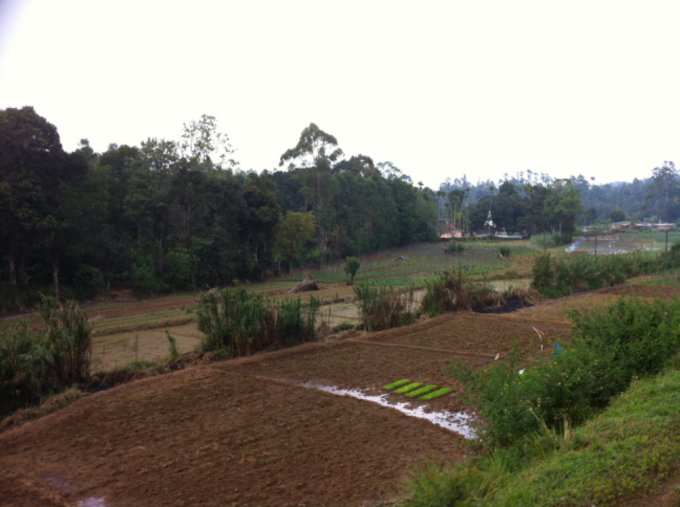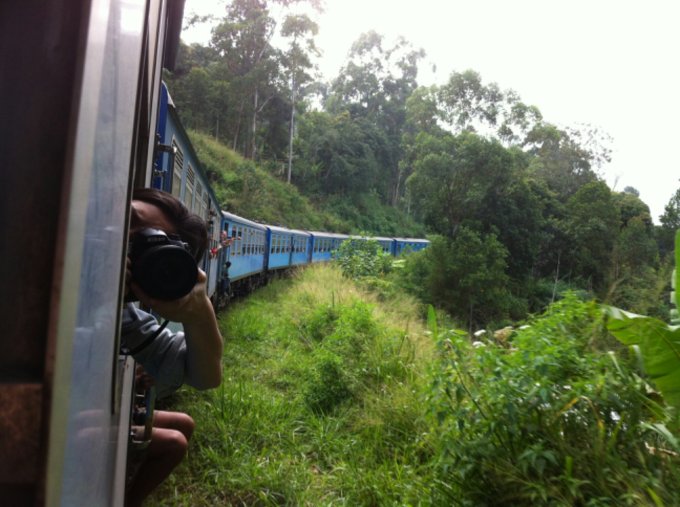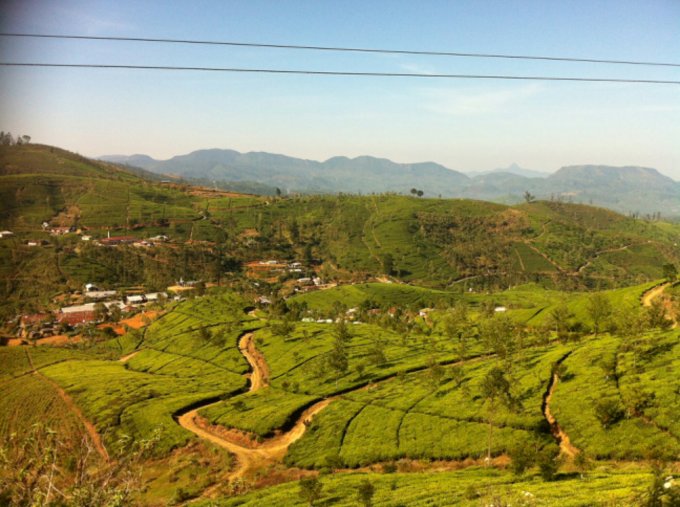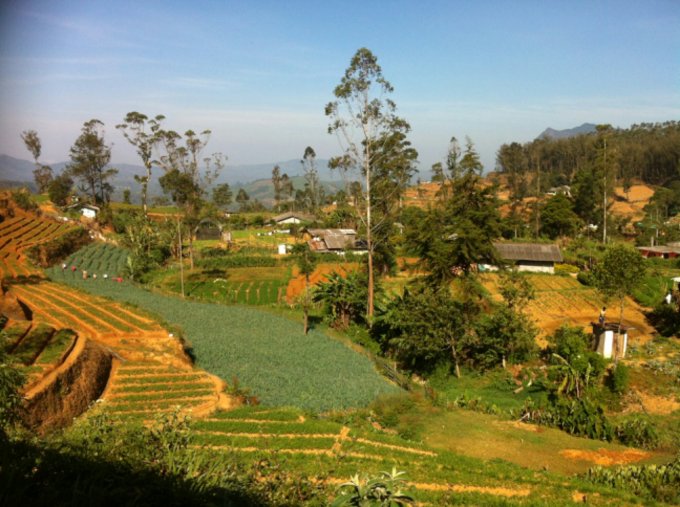As I travelled South through Nicaragua, I met many people that had over-landed from Costa Rica. Some had even left the country earlier than they had anticipated.
“Oh yeah, it’s a beautiful country, but it’s bloody expensive!”
Great. There goes my budget of £1000 a month.
Although upon reflection, as I write this post on the other side of my five week stint, yes, it was expensive, it was like being back in North America, but somehow I am still under budget. And it’s because of cheaper countries like Mexico, Honduras and Nicaragua, that I was able to blow a little bit more money in the land of national parks and adventure.
A word of advice from one traveller to another – mix up your countries, they don’t all have to be cheap for you to be ‘on budget’. Although to be honest, I don’t spend a lot of money on drinking and nightlife, whereas some backpackers can’t leave a town/city without checking out the party scene. I spend most of my money on food.
Fortunately, for my first two weeks in Costa Rica, my best friend, Sam, joined me for the ride. We had planned to visit three places, and we were in agreement that we would spend our money on whatever we wanted. No holding back. This was a holiday for her, and a blow out for me. It was also nearly Christmas, so that was another excuse to go wild.
First stop was Tortuguero, a very small, one street peninsula village, on the East coast of Costa Rica. The main magnetism that attracts tourists here is the national park. But the fun begins with the journey.
After the not so exciting two bus journeys from Costa Rica’s concrete capital, San José, we came to the end of the road. Literally. The only onward journey is via a long narrow boat that winds its way along a river surrounded by dense jungle for over an hour. When someone spotted a cayman basking on a vertically growing tree, the driver kindly backtracked for us to take photos.
We were very lucky to have a smooth ride and a bright sunlit day. Mainly because all our luggage was on another boat, of which mine had been placed precariously on top of the pile. To this day I can’t believe that we didn’t have to fish it out of the river.
As is cryptically within the name, Tortuguero is famous for its sea turtles that lay their eggs on the shore. We had just missed the laying season, but every night, if you were in the right place at the right time, you’d see one or two babies cracking their shells and breaking for freedom. We were two of the lucky few.

Discarded turtle shells in a nest
We caught the miracle of one hatchling frantically flapping his flippers as he scurried towards the sea. I was surprised at how quickly it was over. It must have taken a total of one frightening, exhausting, exciting minute for the creature to drag itself into the waves. And it’s all down to pure instinct upon hatching.

Baby turtle breaking for freedom – excuse the blurry image, it was dark and he/she was fast
Turtles were not actually our primary reason for visiting tiny Tortuguero, this was just an added bonus. Sam’s priority, which we achieved within the first ten minutes of our three-part, all-day tour, was to spot a sloth. This was the dream ever since she booked her flight, and no sooner had we sat down in our fancy, silent, electric-motor canoe, that our tour guide spotted a three-toed sloth in the depths of the canopy. There were four of us on the tour, and we all looked at each other, open-mouthed, thinking the same thing.
How did he see that?

Photo of the three-toed sloth taken on an iPhone 5 through the lens of a telescope
But of course, as the weeks went by, I learnt that tour guides tend to simply, ‘know’, where certain animals will be hiding. There are often hordes of bored looking guides sitting at the entrance to the national parks, promising that we won’t see anything unless we pay for the well-trained eyes of these nature geniuses.
Fun facts – sloths come down to the ground once a week to poo. They have a moss that grows in their fur which is perfect for sloth moths to live in. When the sloth ventures to Mother Earth to complete it’s business, the moths will lay their eggs in the faeces. The moth hatchlings then fly off to find their own mossy three-toed home to live in. Fascinating stuff.
So I admit that we wouldn’t have seen a furry/scaly/wriggly soul if we hadn’t paid for the tour, but to be honest, once you’ve been on one guided jungle adventure, you don’t really need to do it in every national park. And Costa Rica is riddled with them. Each with a steep $10 entry fee. Except for Cahuita, which is entry by donation.
 The elegance of a cayman, skimming the surface of the river, completely ignoring our presence
The elegance of a cayman, skimming the surface of the river, completely ignoring our presence
In Tortuguero, we paid $65 for full day tour package with Tortuguero Tours ‘Adventures Close to Nature’, (follow the link to their current website. I believe they are working on a new one, so if the link doesn’t work, you can find them on Trip Advisor). This included a two to three hour canoe tour, a two to three hour day walk through the national park, and a two hour night walk through a privately owned park. It was worth every single cent. We were able to see both the two and three-toed sloth, a cayman, camouflaged reptiles, turtles, frogs and many different types of birds native to Costa Rica.
 This photo of a turtle was taken moments before it fell into the river
This photo of a turtle was taken moments before it fell into the river
It reminded me of my childhood, when I stayed with my family in Wales. We would go on outings to the woods, or the brook, laden down with fishing nets, buckets and tasty picnics. My days and evenings were spent searching for rabbits and badgers, or ‘rescuing’ tadpoles by bringing them home to the safety of our garden pond. Except this time, I was a big time wilderness explorer in Central America, complete with binoculars, rubber boots, torches, and an expert guide carrying a high quality telescope. It was very, very, cool.
 Frog spotting during the night walk
Frog spotting during the night walk
Beyond the national park, there isn’t much else to do in Tortuguero, so we packed up and headed back along the windy river to catch a bus to La Fortuna. We had big plans there. We were going to go on a fairytale horseback ride in glorious sunshine around the base of Volcán Arenal. For months we had it all, excitingly, mapped out.
Alas, these dreams were slightly foiled. The day arrived, and the rain was relentless. I’m not quite sure what we expected in a rainforest, but when we were discussing the exciting possibilities in a foreign country, away from gloomy England, we naturally thought of sunnier climes.
The rain didn’t deter us though. We were saddled up and given giant black ponchos to wear. The three of us, Sam, the guide, and myself, were a bunch of bobbing heads on horseback.
 Setting a new poncho trend on horseback
Setting a new poncho trend on horseback
Neither Sam nor I had ridden a horse since we were kids, so we were a little nervous. And we had every right to be. You really don’t realise how high up you are, or how powerful the horse is, until you hoist yourself onto its back and hug your legs against its muscular torso. With the mud and lashing rain, our trusty steeds had a lot of elements to contend with, but they battled on, up and down the slippery, rocky maze of the volcanic landscape.
 The soggy journey
The soggy journey
“Horse-riding is simple,” our guide explained. “Lean forward when going up, back when going down, pull reins left and right to steer.”
Regardless of the simplicity of our instructions, I was constantly aware of the four gangly legs below me that could trip or slip at any moment. But they never did.
One of the highlights of this tour was passing the abandoned decrepit hotel buildings next to a lake that the facility no longer use. Our guide explained that Volcán Arenal had erupted a few decades ago and it was no longer safe for guests to stay in these lodges. The jungle had already started to claim them, creeping its way through windows and doors, creating a contemporary set of ruins with Arenal as its backdrop.
 View of the volcano from a path near our hostel
View of the volcano from a path near our hostel
We took the horseback tour with Los Lagos, a hotel/spa that offered all types of excursions, and included entrance to their hot-springs, all for around $50 depending on your chosen activity. We actually booked through our hostel, as they had a special rate with the resort, so I’m not sure how much it would be if you booked directly through Los Lagos. We stayed at Howler Monkey Hostel, a new hostel about a two and a half kilometre walk from the centre of La Fortuna. This suited us as it was also about three kilometres away from the trailhead for Cerro Chato, a volcano that you can independently climb.
After our very wet two hours on horseback, we were very grateful for the inclusion of the hot-springs with the tour. One of the pools had a swim-up bar where you could order food and cocktails, but upon spying the very small white plastic cups which your mojito was un-lovingly poured into, and the excessive cost, we passed. Also, take note of the temperature of each pool, or you just might end up going down a fun looking slide with a shockingly bitter landing. Much to everyone else’s enjoyment.
Back at the hostel, we used the fantastic (not sarcastic, possibly the best equipped kitchen I’ve ever had the luxury of using in a hostel) kitchen facilities to make our dazzling dinner of veggie omelettes, and washed them down with our perfectly mixed cans of mojitos that were the equivalent of £1. I know we said we were happy to have a blow out on this trip, but our cheap, shop-bought cans, went down a treat for the price.
Exhausted, we crashed out early in the comfiest hostel beds ever, and slept solidly until the morning. Refreshed and ready to go, we took a taxi to La Fortuna’s bus terminal, and hopped on a bus to Monteverde.
Which brings us to the third and final expense of our Costa Rican splash out. Another of Sam’s bright ideas, which I was in ninety percent in agreement with, and maybe ten percent apprehensive. Zip-lining through the canopy of Monteverde’s cloud forest. Sounds awesome, right? And it was, until we came to the last task. The Tarzan Swing. Why anybody would want to step off a platform, in the middle of the forest, and hope the wired contraption above does its job, and stops you plummeting to your death, is beyond me. Although I suppose some people could say this about the actual zip-lining, but this to me seems much easier. You have the option to break with your hand safely in a glove, and control your speed. The Tarzan Swing means putting all your faith in your own ability to be able to step off, by yourself. This is the part I struggle with.
 Getting ready for some rappelling. I wish there had been more of this included.
Getting ready for some rappelling. I wish there had been more of this included.
Sky diving: someone is strapped to you and they perform the ‘leap’ out of the plane. Easy. Tick. Did this in New Zealand a couple of years ago.
Canyon swing: you are strapped to a wooden plank and someone ‘drops’ you into the canyon. Maybe. Could be pushing my boundaries. Not tried this yet.
Bungee jumping: no explanation necessary. Absolutely not. No thanks.
As you can probably gather, I was a big wimp and backed out of the Tarzan Swing. I promised Sam I would do it, but when the two Costa Ricans were rapidly clipping me to the ropey device that would ‘save my life’ as it pinged me into the air, I panicked. I’m pretty sure my fingers were crossed behind my back when I promised anyway. Sorry Sam!
 Cheeky grin for the camera on a normal zip line
Cheeky grin for the camera on a normal zip line
It sounds like I didn’t much like our zip-lining excursion doesn’t it? Well, that’s definitely not true. As I said, I was ninety percent sure of the whole idea. The eleven zip-lines were super fun, and we got to walk across some pretty lengthy hanging bridges that were high up in the trees, which I loved. Thankfully I don’t suffer from vertigo and I’m not afraid of heights. There was a bit of rappelling in the middle of the zip-lines, which was fun. But for me, the main events were the two Superman lines.
 Zipping through the cloud forest.
Zipping through the cloud forest.
Our friendly, excitable, Costa Rican adrenaline junkies, strapped us to the wires, vertically. We had absolutely no control over any aspect of this zip-line. Our one job was to hold out our arms, like a plane, and let ourselves be pushed. Perfect. I didn’t have to make the move.
It. Was. Awesome.
You really do feel like you’re flying, swooping through the air, gazing down at the green, fuzzy rug-like treetops whizzing by below you. For a whole thirty seconds, you are a bird.
Again, this was a $50 activity, and even though I chickened out of the swing of death, and I was only ninety percent game, it was one hundred percent worth it. Ironically, we went with 100% Aventura, a company I can highly recommend. Not once did I ever feel uncomfortable or unsafe in the presence of the guides, in fact, they were really comical and made the whole group feel at ease.
 Enjoying the moment
Enjoying the moment
Costa Rica has everything. It is a place you can hike, explore, test your fears, or even relax on the coast with a cocktail.
It’s expensive, but remember, it’s all relative. Just spend less in another country, and hey presto, you have a little more cash to play with in the heart of the Central American rainforest.
This post was written to the sound of a contemporary mix of songs with a jazzy twist. The location was Goza Espresso Bar in Cuenca, Ecuador, also known as ‘Gringolandia’ by the locals. I had a double espresso. I never order single espressos.






















































































